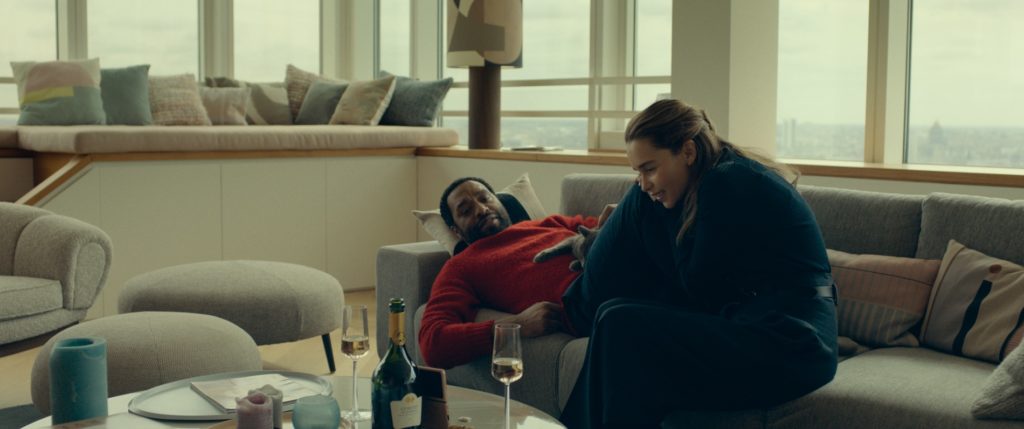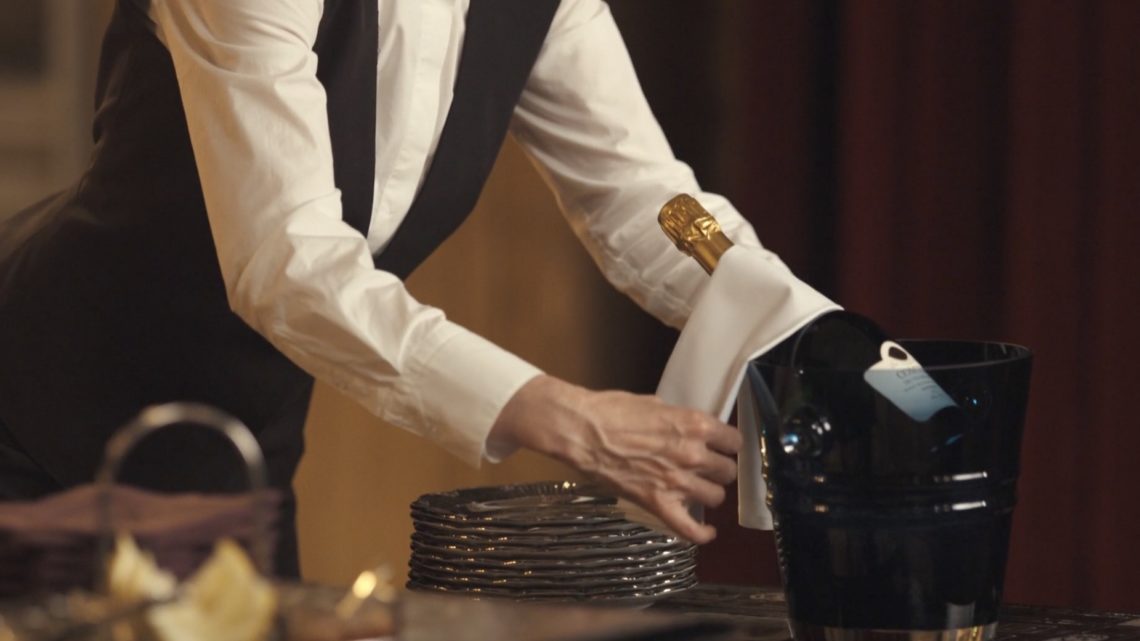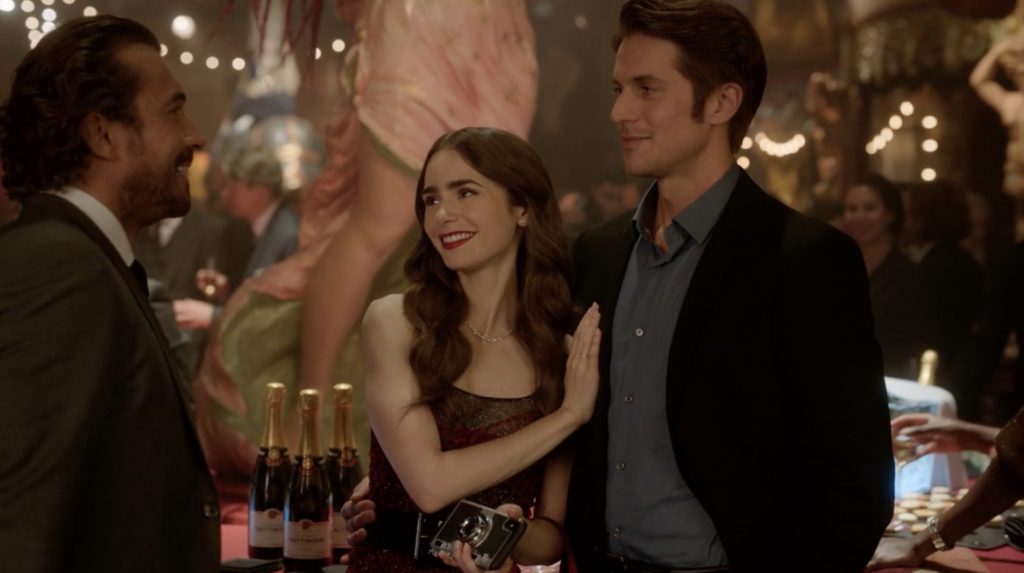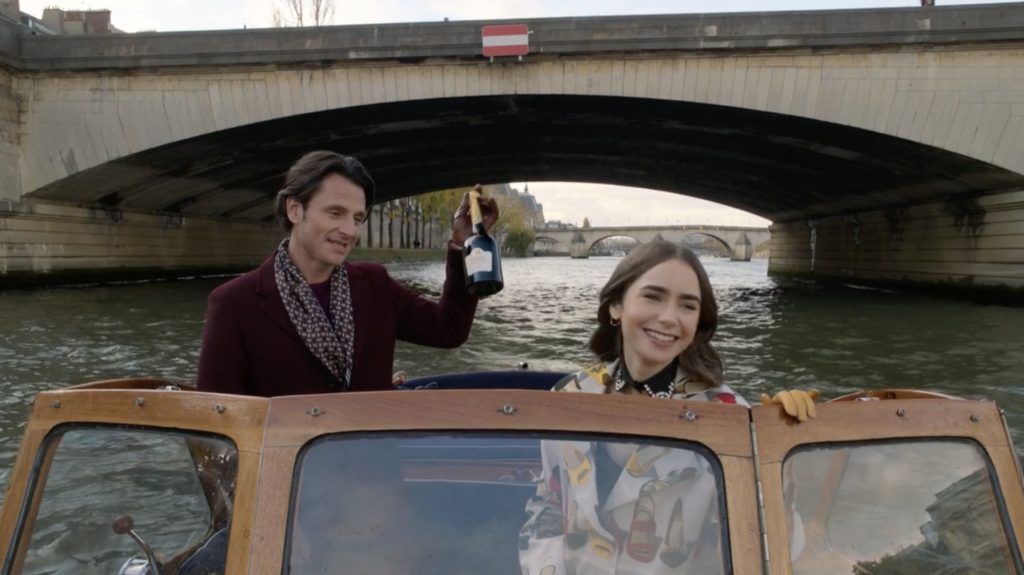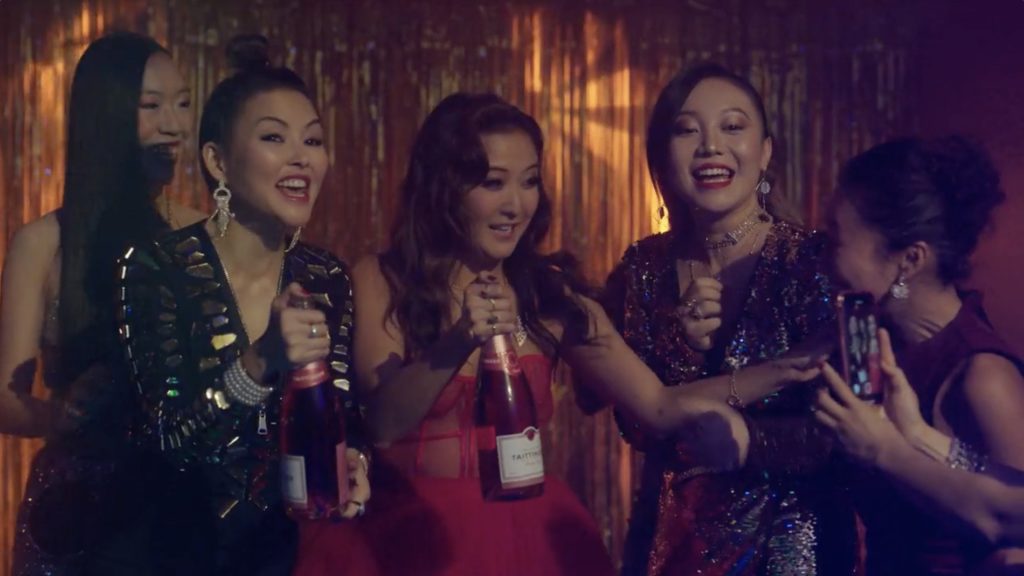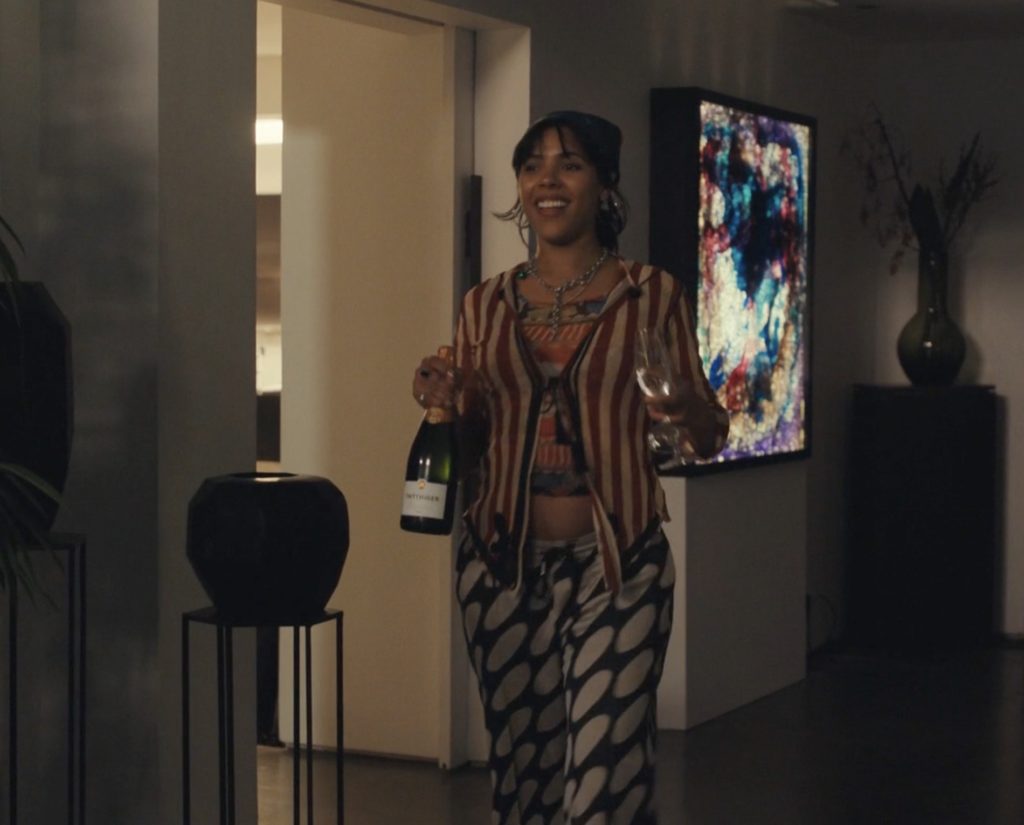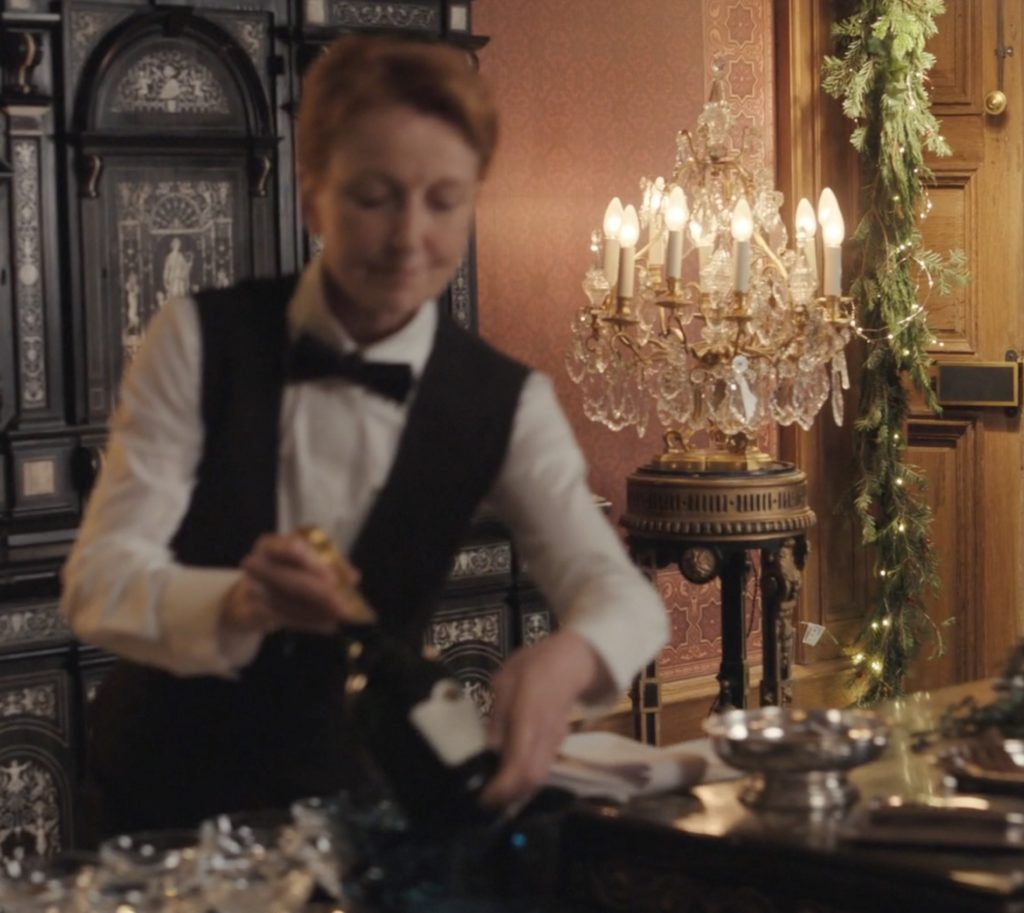Marketing strategy, or reputation building? These days, product placement is all the rage with brands, providing a modern form of communication that enables them to reach vast national and international audiences. For Taittinger, this quid pro quo with the world of cinema is also a natural continuation of its long-standing support for the arts.
Ext. Paris (night). Emily and Mindy pop open a bottle of champagne, taking selfies to share on social media as the Eiffel Tower sparkles in the background. How many times has this scene from Emily in Paris been viewed? The figure is somewhere in the tens of millions. This means that tens of millions of Netflix subscribers all over the world have cast a glance at a label that symbolises French art de vivre, and that also appears during other moments of glitz and glamour during the series. Under the advisement of Marques & Films, which represents the Maison in the world of cinema and TV, Taittinger certainly hit the bullseye by choosing to appear in this production – not only because the series was an international hit, but also because the Taittinger image and the feel of the show were so compatible with one another. This propitious arrangement did not come about by chance, but through the hard work of experts in product placement: a role Jessica Chamot has spent two decades perfecting. “We tend to have an oversimplified view of product placement: a character wearing Nike shoes, or a bottle of Coke sitting on a table, whereas really we’re no longer in that figurative place. Rather, it’s about adding organic ingredients to the story. ”
Nourishing authenticity in film
Before filming begins, scripts are circulated between Marques & Films and the producers or technical teams. “One party wants to use product placement to help fund the production, while the other wants to nourish the film’s authenticity.” This is where Jessica Chamot’s professional acumen comes into play: “We pick apart the script and examine every scene in detail, and we categorise the ones that have, or could have, the biggest impact. Working from there, we suggest 12-15 possible product placements that we feel could be both beneficial and credible.” Once everyone’s in agreement, the agency contacts brands from the various sectors identified, and offers them the opportunity. “Our role is to act as a go-between, understanding both the brands’ marketing goals and the director’s artistic vision. When you present a potential placement to a brand, they have a major strategic choice to make.Does the brand want to be associated with the values of the story? What will their product bring to the table? Will it transcend the narrative, transform an action, or confirm an intention? When I go after a brand, it’s because I’m sure they’re the right fit. ”
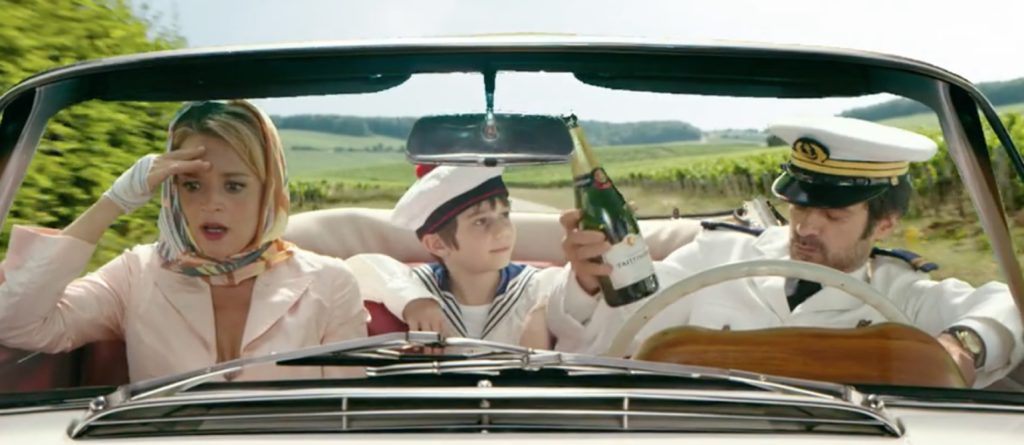
The director as umpire
Product placement is a – sometimes subliminal – form of communications, and is soaring in popularity. We may note that the synergies which now exist between various broadcast media (cinema, TV, streaming platforms) offer brands broad visibility with the target audience over an extended time period, making this a highly attractive option. “Brands are starting to eschew traditional advertising spaces. They’re leaning more and more into entertainment, having realised that they can make a greater emotional connection with the consumer.” While in an advertisement the company can do whatever it wants, in a film the brand must bend to an artistic context it doesn’t control. The director is the umpire: how far are they willing to go with their project? They’re the ones who make the final call. “We’re not there to alter the content,” insists Jessica. “If we’re doing product placement, it’s out of a love for cinema. The director listens to requests, and the brands have to listen to the limitations they set.” Placements are arranged as part of a financial exchange, except in the case of wines, champagne and alcohol: here, the brands meet filming requirements by providing products free of charge, which represents a direct saving for the production.
Ultra-premium world-building
The Maison Taittinger has been working with Marques & Films for around fifteen years, and over that time its on-screen presence has evolved. “Our initial position was to appear in lots of French films, so that we’d become synonymous with champagne on film. It worked very well,” observes Jessica. “More recently, with Vitalie Taittinger, we’ve refocused the strategy to move into the sphere of ultra-premium, powerful, elegant, and increasingly international world-building, with directors and casts who will confer a distinctive image on the brand – although we still allow ourselves some creative freedom.” As such, bottles of Taittinger Brut Réserve or Comtes de Champagne have been subtly inserted into series such as Citadel, Irma Vep, Winter Palace, Succession, The Pod Generation, La Maison, and others. On the big screen, the brand has recently danced with Callas and Onassis in the biopic Maria, starring Angelina Jolie, and will journey through fantasy worlds with Virginie Efira and Romain Duris in Waiting for Bojangles. Taittinger will soon be appearing in Romain Gavras’s Sacrifice with Anya Taylor-Joy, Chris Evans and Salma Hayek, Remi Bezançon’s Bazaar with Laetitia Casta, Gilles Lellouche, and Guillaume Gallienne, Pierre Salvadori’s Venus Electrificata, and the forthcoming Arte series The Deal. From thrillers to tragedies to comedies, historical epics to fantasy worlds: as long as there are moments of joy and splendour to be celebrated, the door is open to genres of all kinds.
